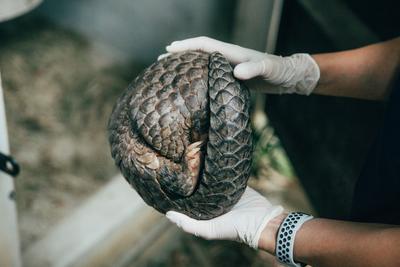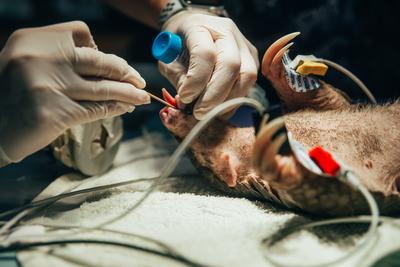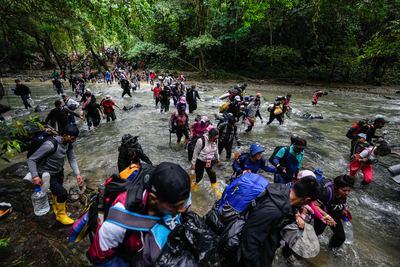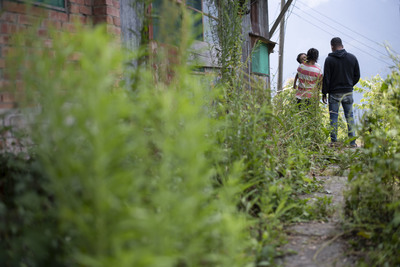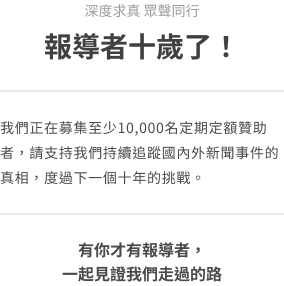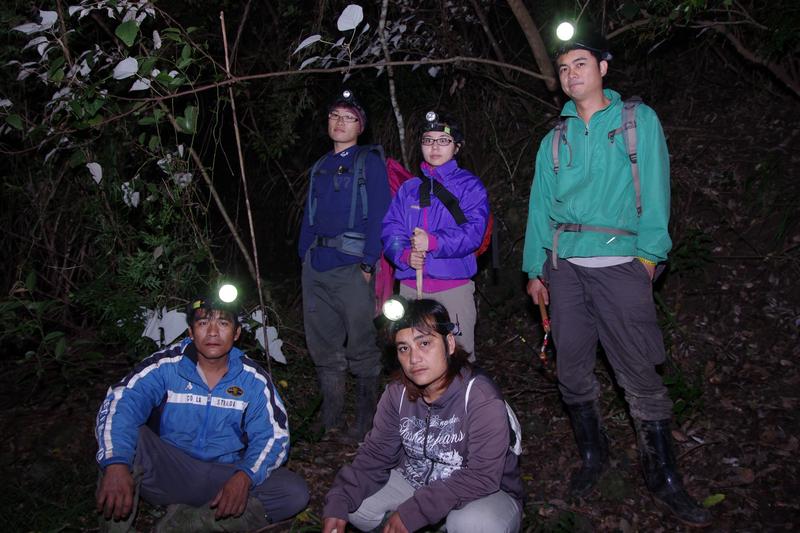
Scientists around the world had been trying to figure out the nutritional composition of the wild pangolins' diet, but their field research has largely been unsuccessful. In Taiwan, however, a group of passionate local residents and researchers broke records by tracking down pangolins for eight years. Researchers targeted 47 wild pangolins for the study and even filmed the world's first footage of a wild pangolin feeding its baby.
The key to success was collaboration between researchers and locals, but how was this accomplished? And how should Taiwan contribute to the international pangolin conservation efforts using its experiences?
During a search for pangolin burrows, Hsun Ching-min (孫敬閔), a Ph.D. candidate in Bioresources at National Pingtung University of Science and Technology (NPUST), took us up the mountain. After searching for over an hour, all we could find was an old burrow that was buried underneath a pile of leaves and weeds. Eventually, we ran into an indigenous resident of the area. He simply pointed at a nearby slope and said, “There's a burrow and it's quite new.”
To climb up a steep slope with loose soil, we had to crawl on all fours while holding onto random weeds and bamboo shoots. Within 10 minutes, we found a deep underground burrow, with the remains of palm-sized ant formicary next to it — a pangolin must have had a feast here just now.
“This is a formicary of Taiwanese white ants, left behind by a pangolin. It usually starts to become moldy after two days, which means this burrow was dug in the past two days,” Hsun explained, as he marveled at our good luck. Apparently, failure is the everyday normal of pangolin studies.
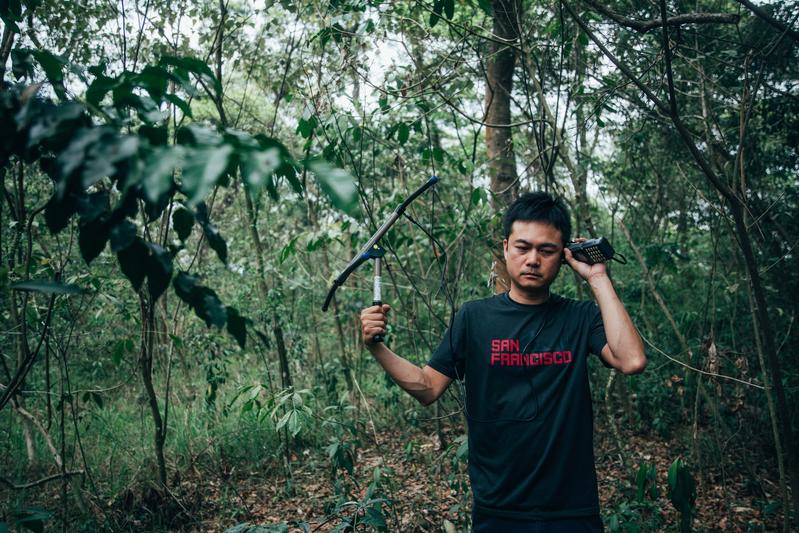
Hsun may be the world's best expert in understanding what pangolins love to eat. Between 2010 and 2018, he made many “world's first” records during his pangolin research in the Luanshan community in Taitung. Among his achievements, his analysis of pangolins' food sources and consumption has attracted the most international attention.
In Hsun's computer, there are over 10,000 photos of ants, most of which were extracted from pangolin stool. “In one sample of a pangolin feces, there are over 20,000 ants,” he said, pointing at an ant body that was smaller than a grain of rice. “This is the white ant's lower jaw. Then there are soldier ants and worker ants. Oh, and that's the ant's head.”
From the pangolin stool analysis, Hsun discovered that Chinese pangolins (Manis pentadactyla) residing in Taiwan consume at least four species of white ants and over 70 other ant species. Taiwanese white ants (Odontotermes formosanus) are among pangolins' favorites in the winter. Even the black ants (Dolichoderus thoracicus), hated by many residents of the mountain area, are one of the main food sources for pangolins.
Pangolins have a particular dietary habit: they love eating ants but tend to refuse artificial feeds. While scientists around the world have struggled in attempts to find out the nutritional composition of the wild pangolins' diet, Hsun made an international breakthrough with his research. His technique in segregating pangolin stool components was even granted a patent.
To segregate the ants from pangolin stools, Hsun used to pick them out one by one with a tweezer under a microscope. He could not finish one specimen, even working to the point of becoming dizzy after a whole day of effort. But accidentally, he discovered that he could first soak the dried pangolin stool in water, then spray mist on the water surface to create bubbles, and the larger ants would be attached to the bubbles automatically. Afterward, he could scoop out 95 percent of the ant heads with a net. With this method, at least five to six specimens can be done in a day.
With the help of this technique, Hsun worked with the Taipei Zoo to further analyze the volume and digestive rate of the different ant species in pangolin stools. They hoped to find out the nutritional composition pangolins need to survive in order to increase the success rate of future rescues. (See "How Does Taiwan Rescue Pangolins, a Species Almost Impossible to Treat in Captivity?" for further information on how stool analysis is applied to artificial feeds for pangolins.)
Hsun has spent almost the same amount of time examining ants as he has spent on tracking pangolins in past years. He often went to the field to collect ant specimens and sought advice from professors who study ants — he could probably write a dissertation on ants alone.
“Well, I can't help it. Who told the pangolins to eat ants?” Hsun said while smiling about his love-hate relationship with pangolins.
Studying pangolins compost and stool and tracking them is not a task that can be accomplished by one person alone. Whenever Hsun is being interviewed by the media, he emphasizes this point: “I would not have accomplished my research if I did not have assistance from local residents.”
For five years, Hsun had been a caregiver at NPUST's Animal First Aid Station (屏東科技大學保育類野生動物收容中心). He was assigned to take care of pangolins and, to his surprise, he discovered there is very little field research on this species. Hsun then decided to throw himself into pangolin field studies, eventually realizing why this is an unpopular research topic.
Dubbing themselves as “stool-sniffing workers,”(聞屎工作者) a term homophonic to “history researchers”(文史工作者) in Mandarin, pangolin researchers often joke about the nature of their job. “But we can't even pick up any pangolin dung!” Hsun said.
Pangolins only excrete once a day and they have the cat-like habit of burying their feces to cover their tracks, which makes it incredibly difficult for researchers to collect stool samples.
Just like how we ran into the indigenous resident on the day of our interview, Hsun accomplished research with the local residents' assistance, while studying pangolins in Luanshan (鸞山). One of the local hunters Yu Man-jung (余滿榮), nicknamed A-yung (阿勇), always accompanied Hsun on his field trips. Hsun had hired A-yung for his local expertise; they traveled around in a jeep, and with their headlamps, they made their way through the forest searching for pangolin burrows and stools.
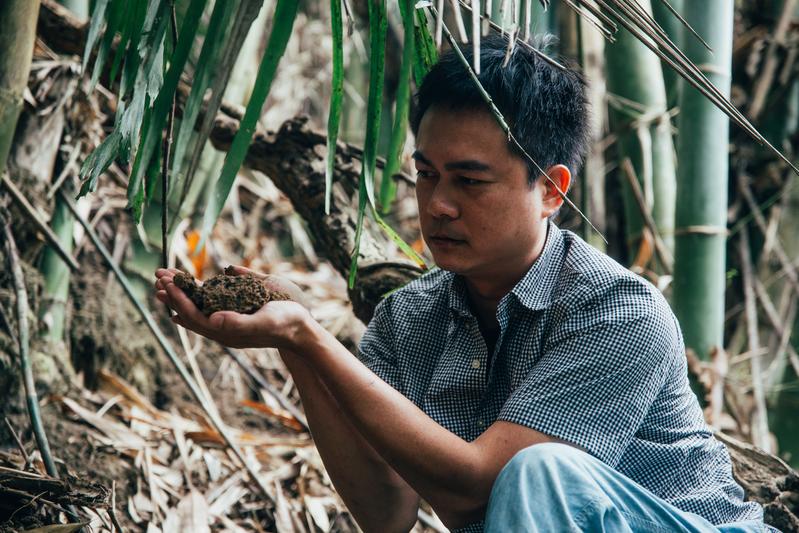
A-yung grew up in the mountains and has spent much of his life around pangolins. In the Discovery documentary, Secrets of the Pangolin, A-yung was filmed climbing swiftly in the dark to catch sight of pangolins. He was more of a partner to NPUST than a worker.
Much of Luanshan has not been exploited by overdevelopment or excessive use of pesticides, hence why an abundant variety of ant species has remained, making Luanshan a pangolin paradise. But the untamed environment also poses higher risks for researchers. Hsun, for example, once rammed his head into a tree when he was chasing after a pangolin signal. Ah-yung's role, then, was not only to guide the researchers but to minimize the level of danger.
According to Hsun, Ah-yung had deep knowledge of the forest and was always the trailblazer in the pangolin patrol team. “If not for Ah-yung, I wouldn't have known where the pangolins were,” he said. The Luanshan residents' generosity in sharing their local knowledge, combined with professional investigative research, has made Taiwan a world-famous place for pangolin studies.
Aside from the helpful residents, Luanshan's former Chief of Police Yuan Tsung-Cheng (袁宗城) had also accompanied Hsun in hunting for sightings of pangolin burrows. Before anyone paid attention to the endangered species in Taiwan, Yuan started to involve his community in pangolin conservation endeavors as early as 2007. His efforts opened up the community to welcome the researchers who were unfamiliar with the local environments and provide guidance.
With assistance from the Luanshan residents, Hsn tracked down 47 wild pangolins in his eight years of research. He did not only analyze pangolin activity areas but also filmed the world's first footage of a wild pangolin nursing its baby.
In 2012, Hsun's team discovered pangolin mother Safi (莎菲) near a cornfield in Luanshan and installed a tracker on her. They set up an automatic camera near the burrow and successfully filmed the entire process of her childbirth and how she carried her baby on her tail outside to look for food.
Although the researchers lost contact with Safi's tracker after five years, it was the world's longest record in tracking a wild pangolin and a breakthrough in many aspects of pangolin studies. Hsun said Safi only weighed 1.5 kg when they first started tracking her but grew to 4.5 kg in three years. By recording her weight over time, researchers realized that pangolins usually weigh less in winter due to fewer food sources. They also observed that Safi's child started to explore outside to look for ants, when it was about 40-cm long and three months old.
“These records will help us to better judge a pangolin's age and provide appropriate treatment for injured pangolins in the future,” Hsun said. A pangolin's age can only be estimated via its body length, weight, and condition of its scales.
Captive pangolins in the Taipei Zoo cannot serve as an accurate benchmark for researchers and vets. Because of a steady stream of food sources and nutrients provided by the zoo, they often grow much faster than wild pangolins; a one-year-old captive pangolin may weigh as much as a two-to-three-year-old wild pangolin.
These differing conditions have made it necessary to also conduct first-hand field research on wild pangolins.
Ah-yung, who had helped NPUST receive international recognition in pangolin studies, unfortunately, passed away in 2016 due to the accidental discharge of a hunting rifle. Since Ah-yung had limited income from his part-time jobs, Hsun raised donations to help his family through their economic hardship after his death. Hsun said it was hard to find someone like Ah-yung, who had detailed local knowledge and was willing to devote time to research. Yet a precious talent like him had not been rewarded accordingly and his income was insufficient to support himself and his family.
“Without a local to lead the way, we would not be able to find the research target, no matter how advanced our technology is,” Hsun said. He hopes the government can support these talents, utilize their local wisdom, and perhaps employ them as local guides or ecological conservationists, in order to make Luanshan a pangolin conservation center domestically and even globally.
Pei Chia-Chi (裴家騏), Hsun's advisor and a professor at NPUST's Wildlife Conservation Institute, has been forging a relationship between the indigenous and wildlife animals. He stated that Luanshan not only has pangolins that are alive and well, but also is a place full of local wisdom and conservation awareness, making Luanshan an ideal place to become an international research center on pangolins. (See "Taiwan's Path to Pangolin Conservation : How a Mega Pangolin Leather Exporter Transformed into a Conservation Specialist" for further information on Luanshan's current conservation status.)
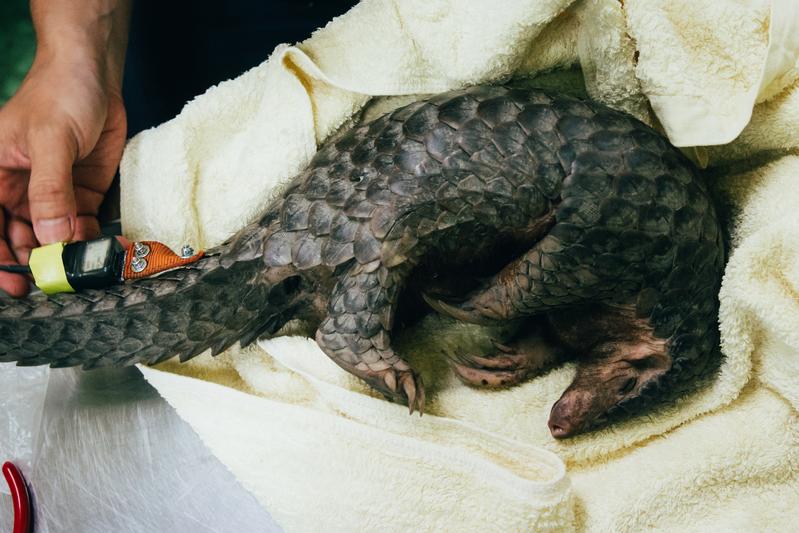
In fact, pangolin research done by NPUST in Luanshan has attracted attention from conservationists around the world. Tulshi Laxmi Suwal, a P.hD candidate from Nepal, came to visit NPUST's Animal First-aid station, to examine Hsun's pangolin tracker, another one of his patented inventions exclusive to Taiwan.
In the past, researchers inserted trackers through a pangolin's scales, but it was easy for the tracker to get stuck when the pangolin enters its burrow, causing its scales to snap off. Hsun then thought of attaching a hiking strap to the tracker to minimize the chance of breaking the pangolin's scales and losing the tracker.
Suwal headed Nepal's Small Mammal Species Conservation and Research Foundation(SMCRF) and came to NPUST to study for his Ph.D. degree in 2018. “Nepal's pangolin habitat is very similar to Taiwan, but we don't have the same abundance of pangolin population and tracking technology,” he said.
The primary pangolin species in both Nepal and Taiwan are Chinese pangolins and they share similar habits. Suwal intends to return home this year and employ the techniques he has learned in Taiwan to build a pangolin database in Nepal.
“Taiwan's climate and native species are similar to other southern countries and we should focus more on that,” Pei said. Pangolins can be found in tropical and subtropical climates, and Taiwan is among the best countries for wild pangolin studies and conducting wild pangolin rescues. Luanshan, which has the capacity to provide pangolin field observation, would greatly contribute to global pangolin conservation if an international rescue center can be set up locally, Pei suggested. In 10 to 15 years, the center can potentially train three to five pangolin professionals from other countries. “Taiwan should make more contributions,” he said.
When Hsun compared notes with researchers from other countries, he realized every country has its own struggle. For example, China has the highest demand for pangolin scales for their supposed medicinal properties, which has led to mass pangolin trafficking. Even if the pangolins were rescued from traffickers, their death rate is still very high, since rescue techniques are not yet up to standard. (See "How Does Taiwan Rescue Pangolins, a Species Almost Impossible to Treat in Captivity?" for further information on the challenges of pangolin rescue.)
Vietnam's rescue techniques, on the other hand, have matured in over a decade. However, conservationists have had a hard time reintroducing recovered pangolins to the wild because of the country's deforestation problem and the predatory traffickers. Hsun once visited Vietnam specifically to assist in tracking pangolins that were released back to the wilderness, but he and the rescuers had to drive seven or eight hours to the Vietnam-Laos border to find a safe place for reintroduction.
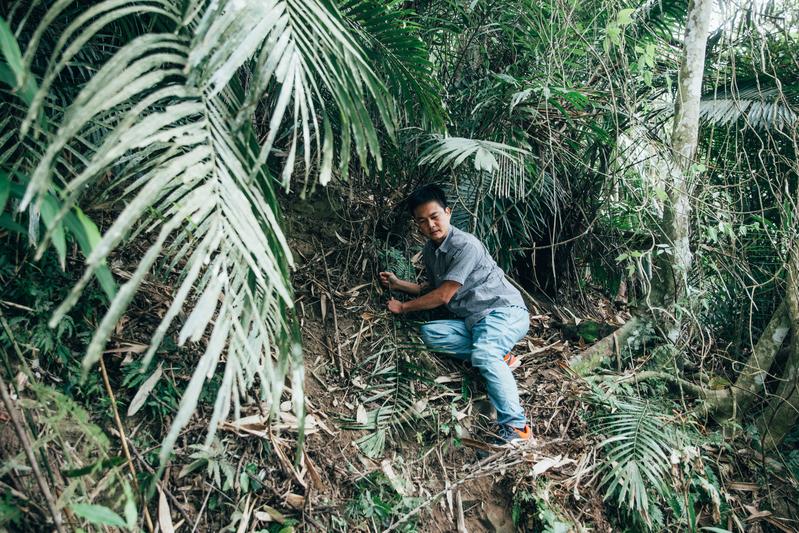
As the man who has collected the most pangolin feces in the world, Hsun Ching-min senses it's his calling to rescue this endangered species. Hsun accepts invitations to visit various non-governmental organizations and rescue centers in different countries, sometimes even risking his life for these visits.
Last year, when he went to Vietnam on a research trip for two weeks, his entire body was bitten by leeches. After he returned to Taiwan, he had a fever of 40 C and he was hospitalized for nine days before recovery. The doctors have yet to figure out the cause of his illness to date.
This terrifying experience, however, did not prevent him from visiting other countries for further research collaborations. NPUST and Malaysian University of Sabah once teamed up to study Hsunda pangolins (Manis javanica), another pangolin species that can be found in Southeast Asia. Hsun said he would like to conduct his research in Malaysia after finishing his studies on Taiwan's pangolin dietary habits, since there is still very little research data on Hsunda pangolins, despite their endangered status.
“Some countries overexploit all kinds of natural resources because their economies are more backwards, relatively speaking. Taiwan used to be the same in its early days,” Hsun said. Rather than condemning countries with issues regarding pangolin trafficking, Hsun hopes to give them a hand with Taiwan's successful conservation experience and to protect each and every pangolin fighting for survival around the world.
(To read the Chinese version of this article, please click: 錄下全球首筆野外穿山甲哺育影像,台灣研究員攜手獵人創紀錄.)
深度求真 眾聲同行
獨立的精神,是自由思想的條件。獨立的媒體,才能守護公共領域,讓自由的討論和真相浮現。
在艱困的媒體環境,《報導者》堅持以非營利組織的模式投入公共領域的調查與深度報導。我們透過讀者的贊助支持來營運,不仰賴商業廣告置入,在獨立自主的前提下,穿梭在各項重要公共議題中。
今年是《報導者》成立十週年,請支持我們持續追蹤國內外新聞事件的真相,度過下一個十年的挑戰。

